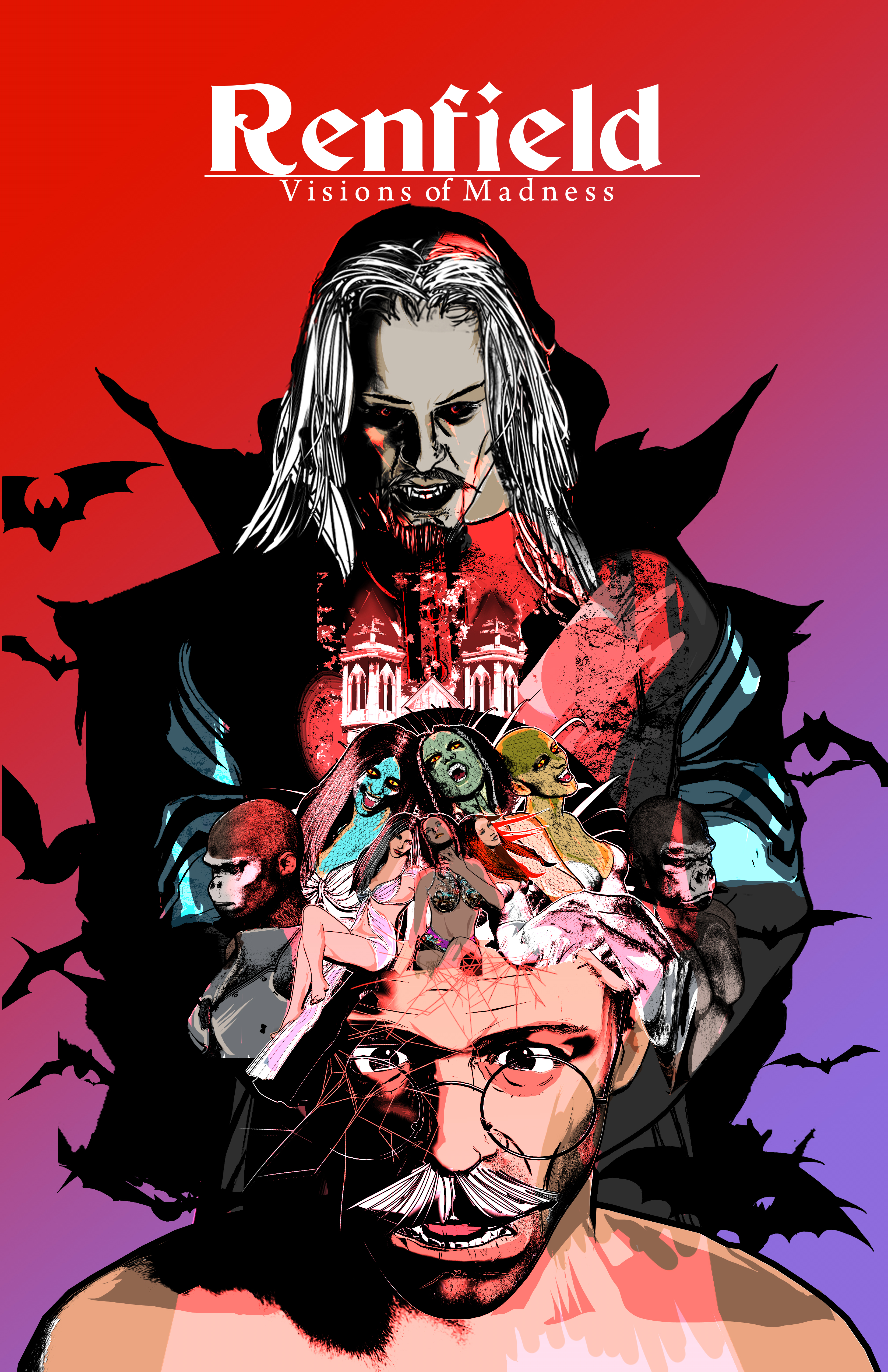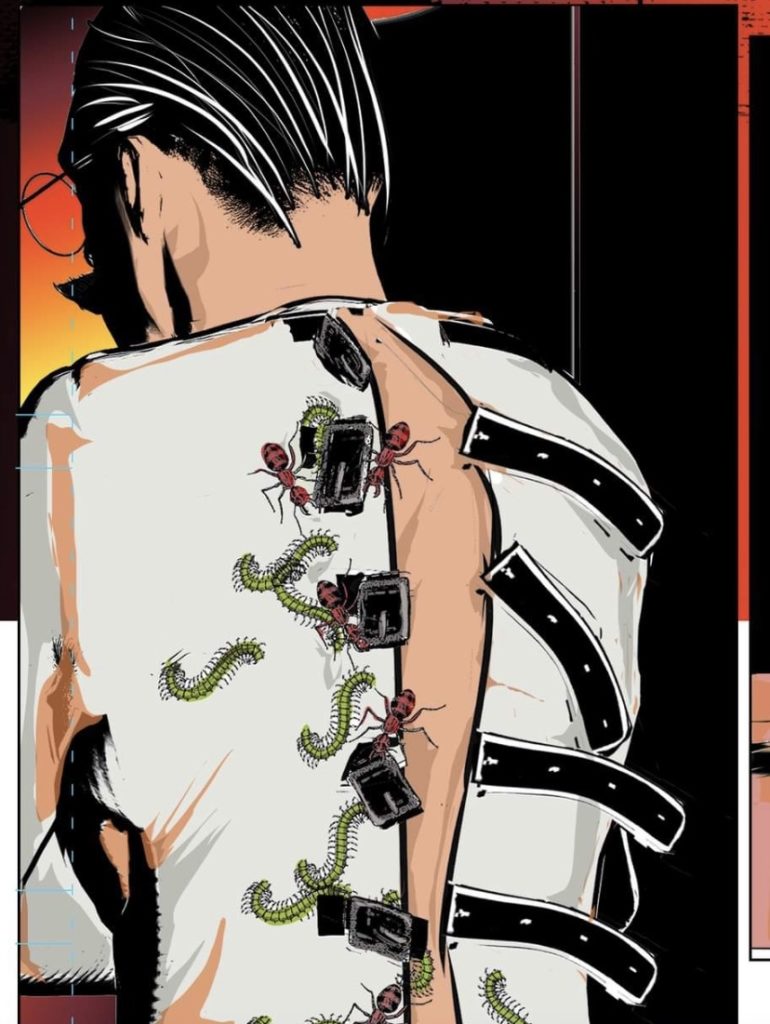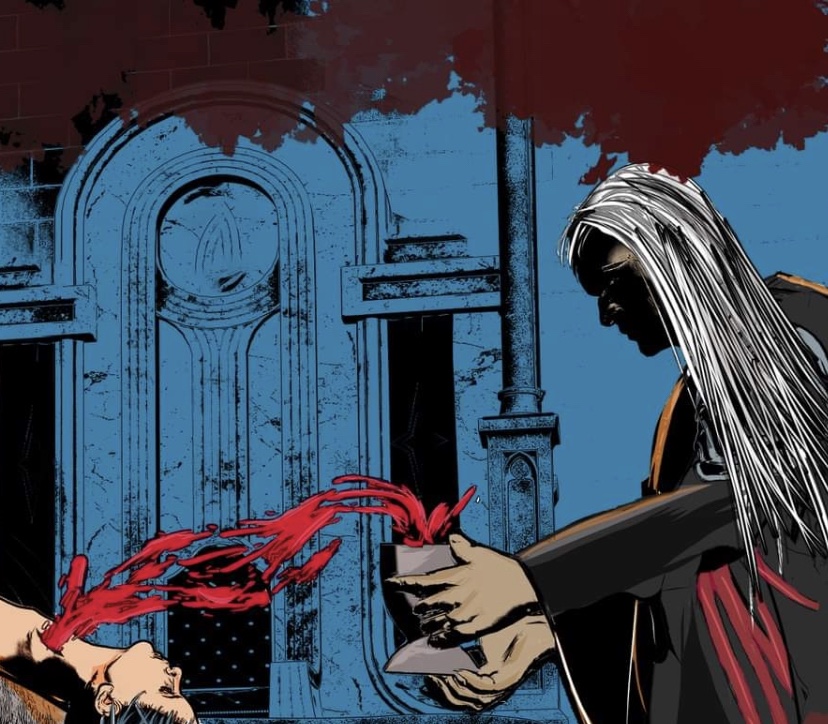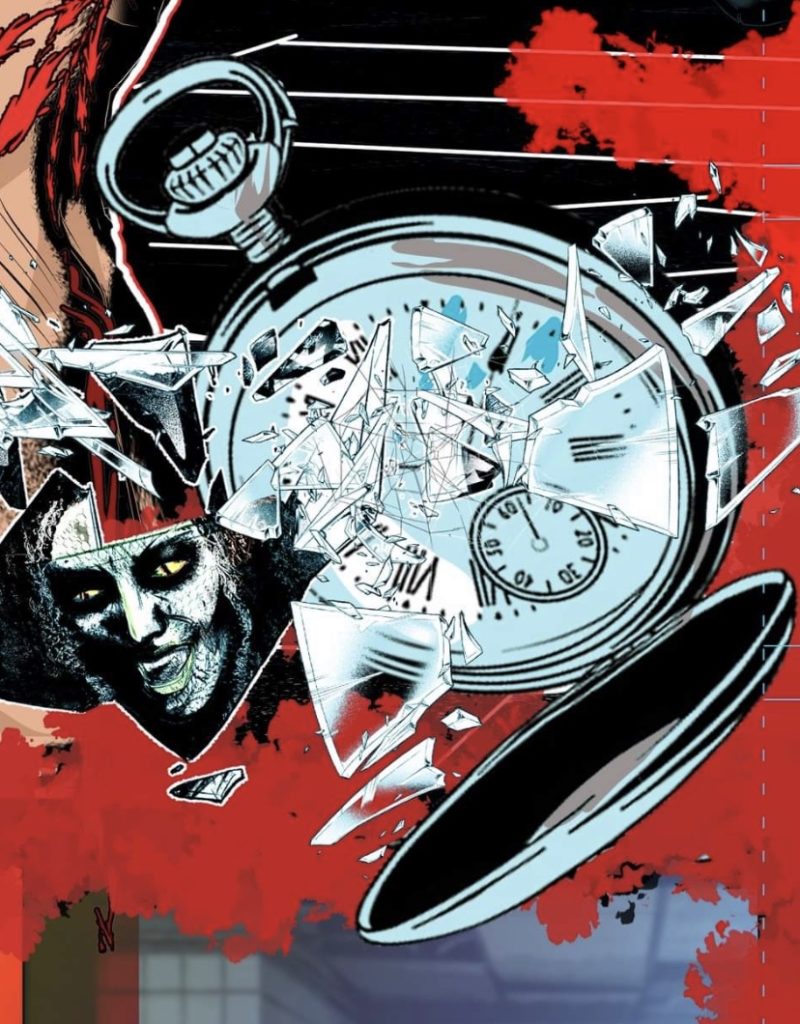
In 1980, the original manuscript for Dracula was found in a barn in Pennsylvania. As if that wasn’t strange enough, scholars discovered that the first 100 pages of the manuscript were missing.
It’s crazy to think that over over years later, a part of that mystery comes to light in comic book form.
…But back to the story…
The Stoker masterpiece that the public knows begins with Jonathan Harker’s letter, describing his first impressions of the Count; the manuscript indicates that Harker’s letter should have been on page 102 of the novel. (Stoker)
The fascination with those lost pages entered the public consciousness. The search for them had begun.
The explanation for why the pages were taken out had to do with Stoker’s editor and several murders that had horrified Londoners at the time.
For Bram Stoker, Dracula was the final product of years of note-taking, writing and research. He used real-life events and people in his story to heighten the sense of dread that a man with supernatural powers who fed on the blood of mortals might be real. His editor did not support his use of real-life people and events. He felt that it would be too much for the public to handle. At the time, London had a killer on the loose. He worried that the novel would cause mass panic and refused to publish it without some changes.
The epilogue was shortened and references to real-life people and events were taken out and several changes to the text were made. About 100 pages were taken out. That version of Dracula was released to the public. Still, the story on those removed pages refuses to disappear, much like the creature described on them. That find in the barn caught the public’s imagination. What was in those missing pages? What else did Stoker want to include in his novel?
This May, Legacy Comix will provide some answers.

Stokerverse, a collaboration of the Stoker family and writer Chris McAuley, chose Legacy Comix to create a comic book illustrating a never-before-seen prequel to Dracula. The comic, written by McCauley and illustrated by Steve Cange is called Renfield: Visions of Madness.
It’s an eight-page Ashcan that packs a punch. Cange’s illustrations do most of the storytelling. There is very little dialogue, but plenty of story. It focuses on Renfield’s initiation into the world where “The blood is the Life.” Cange uses deep, rich colors with a strong base of black that creates the effect of narrow spaces. The characters are drawn to take over each frame, practically spilling out of them. The narrow, tight spaces create a feeling of confinement.
We meet a dignified Renfield, who enters Dracula’s lair that’s reminiscent of a cave. Renfield is dressed in the latest attire of an English Gentleman. Yes, there is an altar with an unconscious young girl with her throat slit, a chalice for collecting her blood, and of course, Count Dracula. Cange has dispensed with Anne Rice’s pretty-boy look. This Count takes the reader back to the hardcore days of Stoker. This count is ferocity itself. His body isn’t willowy but solid, capable of breaking a man with ease.
And the horror continues in the introduction of the Abominations. They are described as half men and half-ape creatures in writing, but Cange’s depiction of them will have readers stunned. He made them creatures with human bodies from the neck down, but from the neck up, they have heads of apes. Their appearance is uncanny in how it stirs memories of another creature made of disparate parts, the monster in Mary Shelly’s Frankenstein.

The Abominations cast Dracula in the role of a scientist like Victor Frankenstein. Did he learn how to animate dead flesh? Many have linked Stoker’s Dracula with the Frankenstein monster. Cange’s illustrations of the Abominations strengthen that link.
Stoker made clear that Dracula’s knowledge was vast. Here, he hints that Dracula possesses an intellect on par with a geneticist. He is a sophisticated, complex individual rather than some crazed monster out for revenge. He is a threat not just to London but to the world.
Dracula’s story is told through a collection of various forms of information sources-letters, diary entries, memos, newspaper clippings. This format allows for an interactive experience very much like how information is processed via social media. Consider the following: Dracula begins with a letter about Jonathan Harker’s experience; it’s akin to a modern-day tweet, that gets enough people interested, which turns it into an article by a curious journalist; both the present and past share that. I find it interesting also that the dialogue of this upcoming comic is written in a similar manner- and that Legacy Comix’s Editor-In-Chief has been a journalist for almost two decades. It’s almost too good to be true.
But again, back to business…
Those diary entries by Mina, for instance, serve the same purpose as an interview. Today, she would be crying for Jonathan in front of a camera in a private room, sharing her pain and fear as her world is turned upside down. She would be as beloved as Kim Kardashian or other reality TV stars. One could imagine people rooting for Mena or lamenting poor Lucy’s lot in life as they went over the events described by Stoker. Who hasn’t overheard a conversation about something scandalous about a favorite celebrity and found themselves pulling out their phone to look it up? We do our own investigating. Stoker readers had to go back and forth between chapters, looking for something missed, maybe a line or phrase that would offer up a better understanding of events in the story much like the people on Reddit did with any available information to find Gabby Petito.

The urgency to know what’s happening and what’s to come is what Stoker created by structuring his novel in this style. His readers were known to make a quick read of the novel, only to revisit it again and again. Legacy Comics’ Renfield: Visions of Madness fits naturally with Stoker’s novel. Readers have another source of information that they can revisit and refer to as they satisfy their need to know about the one and only Bram Stoker’s Dracula.
References:
Stoker, Darce and J.D. Barker. “Bram Stoker Claimed That Parts of Dracula Were Real: Here’s What We Know About The Story Behind The Novel.” Time. October 3, 2018.
